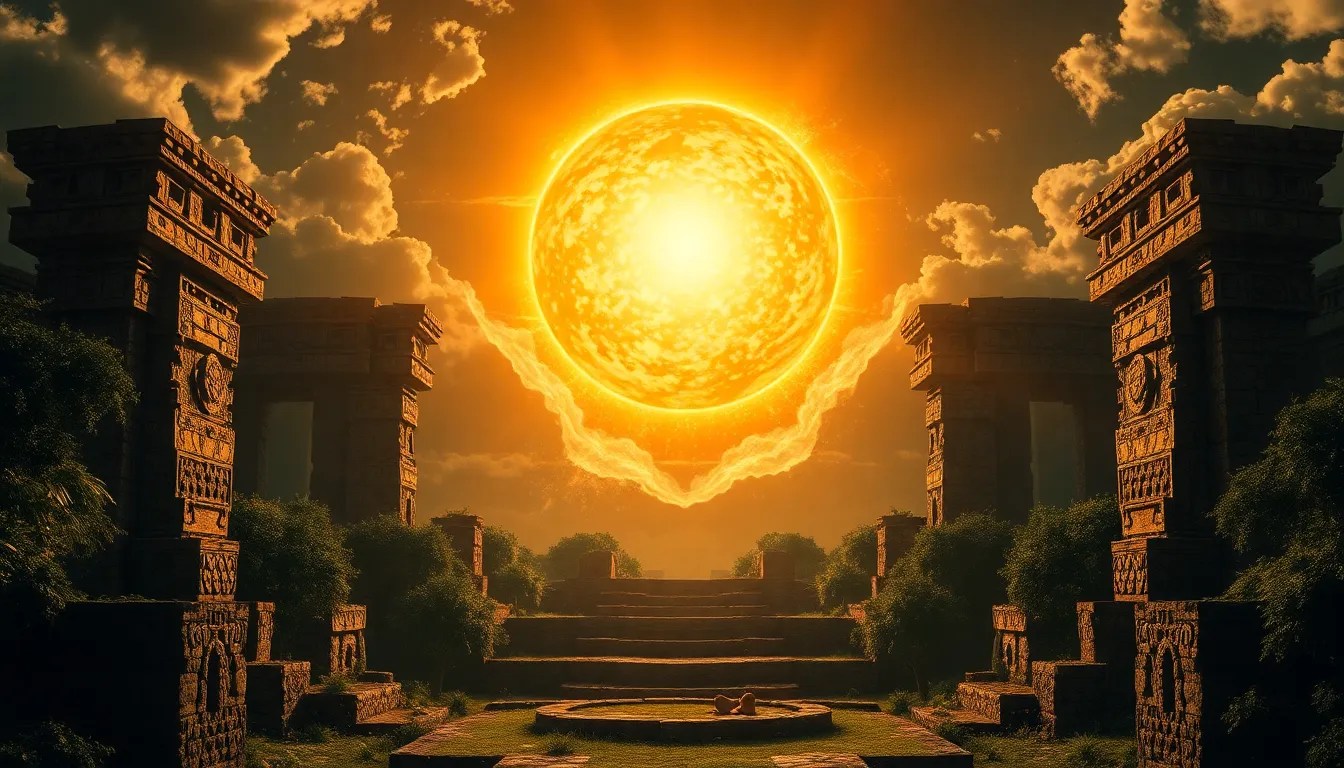The Solar Cycle: How the Mayans Marked Time with the Sun
I. Introduction to Mayan Timekeeping
The ancient Maya possessed an intricate understanding of time, which played a vital role in their culture, religion, and daily life. For the Maya, time was not merely a linear progression but a cyclical phenomenon intertwined with the rhythms of nature. Central to their timekeeping was the solar cycle, which formed the backbone of their calendar systems. The solar cycle dictated agricultural practices, religious ceremonies, and societal events, showcasing the deep connection between the Maya and their environment.
II. The Structure of the Mayan Calendar
The Mayan calendar is comprised of several interlocking systems, with the two most significant being the Tzolk’in and the Haab’.
- Tzolk’in: A 260-day ritual calendar consisting of 20 periods of 13 days. Each day has a specific name and number, creating a unique combination that recurs every 260 days.
- Haab’: A 365-day solar calendar divided into 18 months of 20 days each, plus a short month of 5 days known as “Wayeb.” This structure captures the solar year, allowing the Maya to align their rituals with solar events.
The interplay between the Tzolk’in and Haab’ was essential for determining significant dates and events, with the solar year serving as a crucial reference point in both calendars.
III. The Solar Year and Its Phases
The solar year, comprising 365 days, is a fundamental aspect of Mayan cosmology. The Maya recognized the importance of the sun’s journey across the sky, which was marked by key astronomical events:
- Solstices: The summer solstice (around June 21) and the winter solstice (around December 21) were significant markers of the solar cycle, denoting the longest and shortest days of the year.
- Equinoxes: The vernal (around March 21) and autumnal (around September 21) equinoxes represented times of equal day and night, marking transitions in the agricultural calendar.
These events were not only astronomical phenomena but also held profound spiritual significance in Mayan culture, influencing their agricultural and ritual practices.
IV. The Role of the Sun in Mayan Religion
The sun was revered as a powerful deity within Mayan mythology, often associated with creation, life, and fertility. Key deities related to the sun included:
- Kukulkan: The feathered serpent god who embodied the sun’s power and was central to various creation myths.
- Itzamna: A creator deity who represented the sky and the sun, often depicted as a benevolent figure overseeing the world.
Rituals and ceremonies were intricately linked to solar events, with the Maya conducting offerings and ceremonies during solstices and equinoxes to honor the sun and ensure agricultural fertility. These events were significant occasions for community gatherings and spiritual renewal.
V. Observational Techniques: How the Mayans Tracked the Sun
The Maya employed sophisticated observational techniques to track the sun’s movement across the sky. Some of their methods and tools included:
- Observatories: Structures like the one at Uxmal and the observatory at Uxmal allowed the Maya to conduct precise solar observations.
- Shadow Casting: The Maya utilized shadow casting techniques to determine the sun’s position and the time of day. This method was crucial for agricultural planning.
The sun’s position was integral to daily life, influencing not only religious practices but also agricultural activities, as farmers relied on solar observations to determine the right times for planting and harvesting.
VI. The Interplay of the Solar Cycle and Agriculture
The solar cycle was intrinsically linked to agriculture, as the Maya relied on solar cues to guide their farming practices. Key aspects of this relationship included:
- Planting and Harvesting: The arrival of certain solar events signaled the time to plant crops such as maize, beans, and squash, which were staples of the Mayan diet.
- Agricultural Festivals: Festivals like the New Year celebration coincided with solar events, marking crucial agricultural phases and ensuring community participation.
By aligning their agricultural practices with the solar cycle, the Maya maximized crop yields and maintained ecological balance, demonstrating their deep understanding of environmental rhythms.
VII. The Legacy of Mayan Solar Timekeeping
The legacy of Mayan solar timekeeping continues to influence contemporary understandings of time and calendars. The Maya’s intricate astronomical knowledge laid the groundwork for future civilizations, and their calendar systems have fascinated scholars and enthusiasts alike. Key points of their legacy include:
- Calendar Systems: The Mayan calendars have inspired modern calendar studies, providing insight into ancient timekeeping practices.
- Cultural Preservation: Today, descendants of the Maya continue to observe traditional practices linked to the solar calendar, preserving their rich cultural heritage.
Their astronomical knowledge is not only a testament to their intelligence but also a vital piece of cultural identity that persists in modern times.
VIII. Conclusion: The Enduring Impact of the Solar Cycle in Mayan Civilization
In summary, the solar cycle was a cornerstone of Mayan civilization, shaping their calendars, agricultural practices, and religious beliefs. Through their sophisticated understanding of time and the cosmos, the Maya established a worldview that was deeply connected to nature’s rhythms. The significance of the sun in Mayan culture illustrates how ancient societies can inform our understanding of time and human existence today. The enduring impact of the solar cycle in Mayan civilization serves as a reminder of the profound relationship between humanity and the cosmos.



